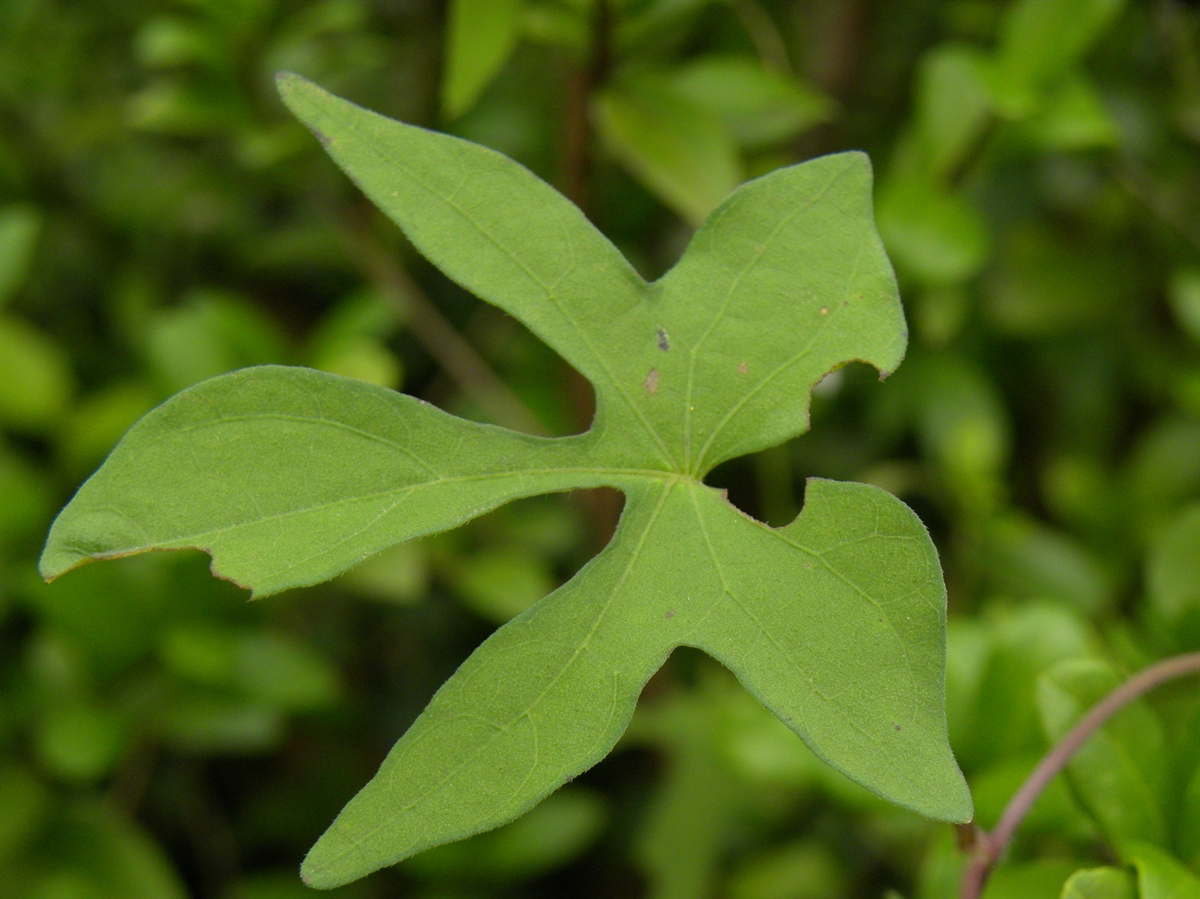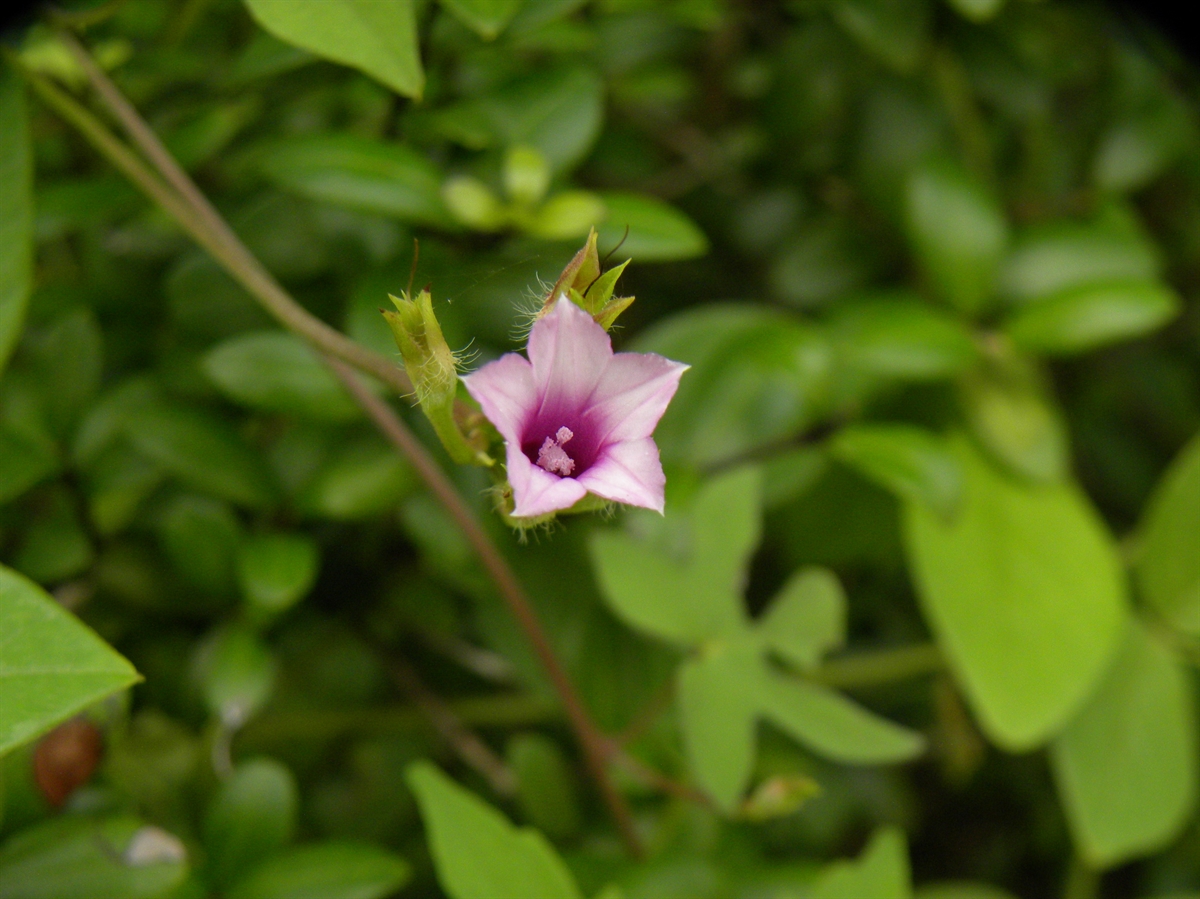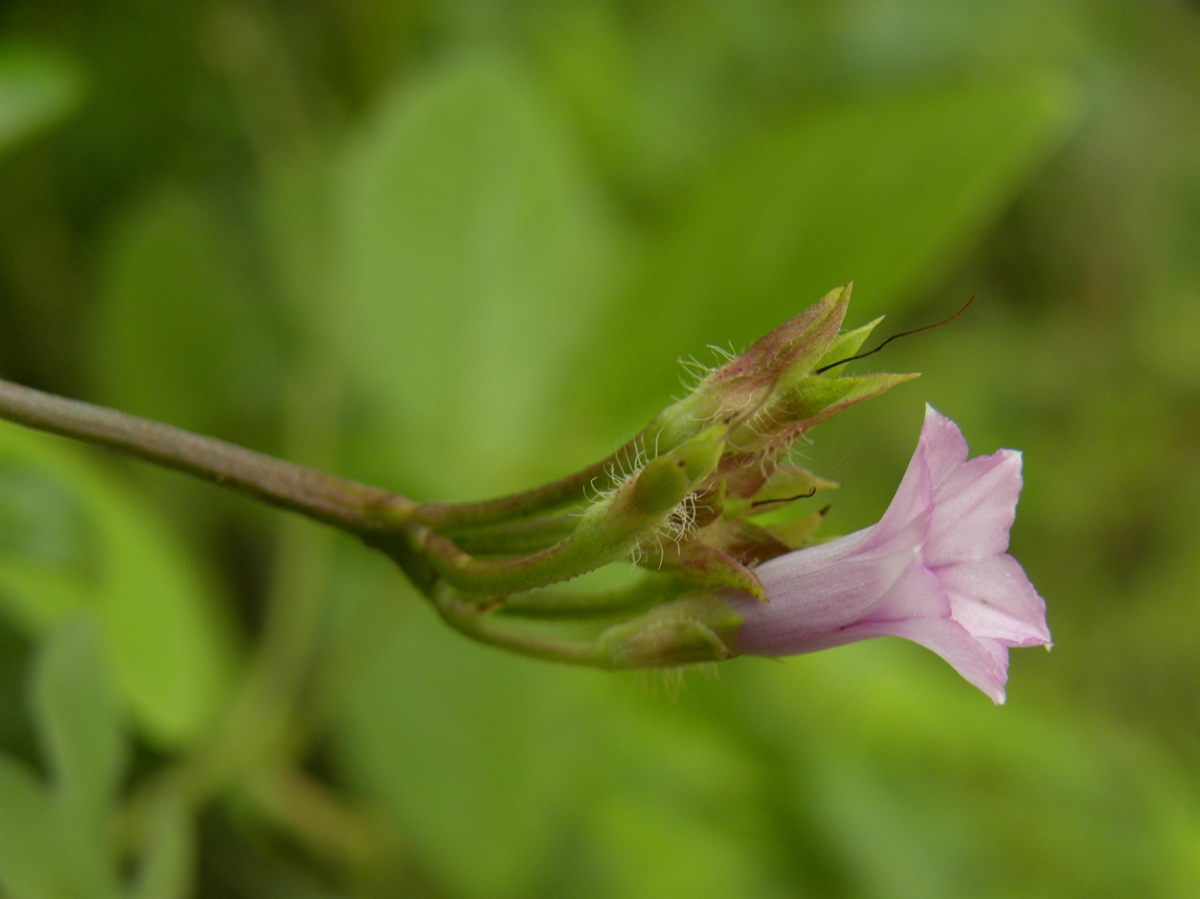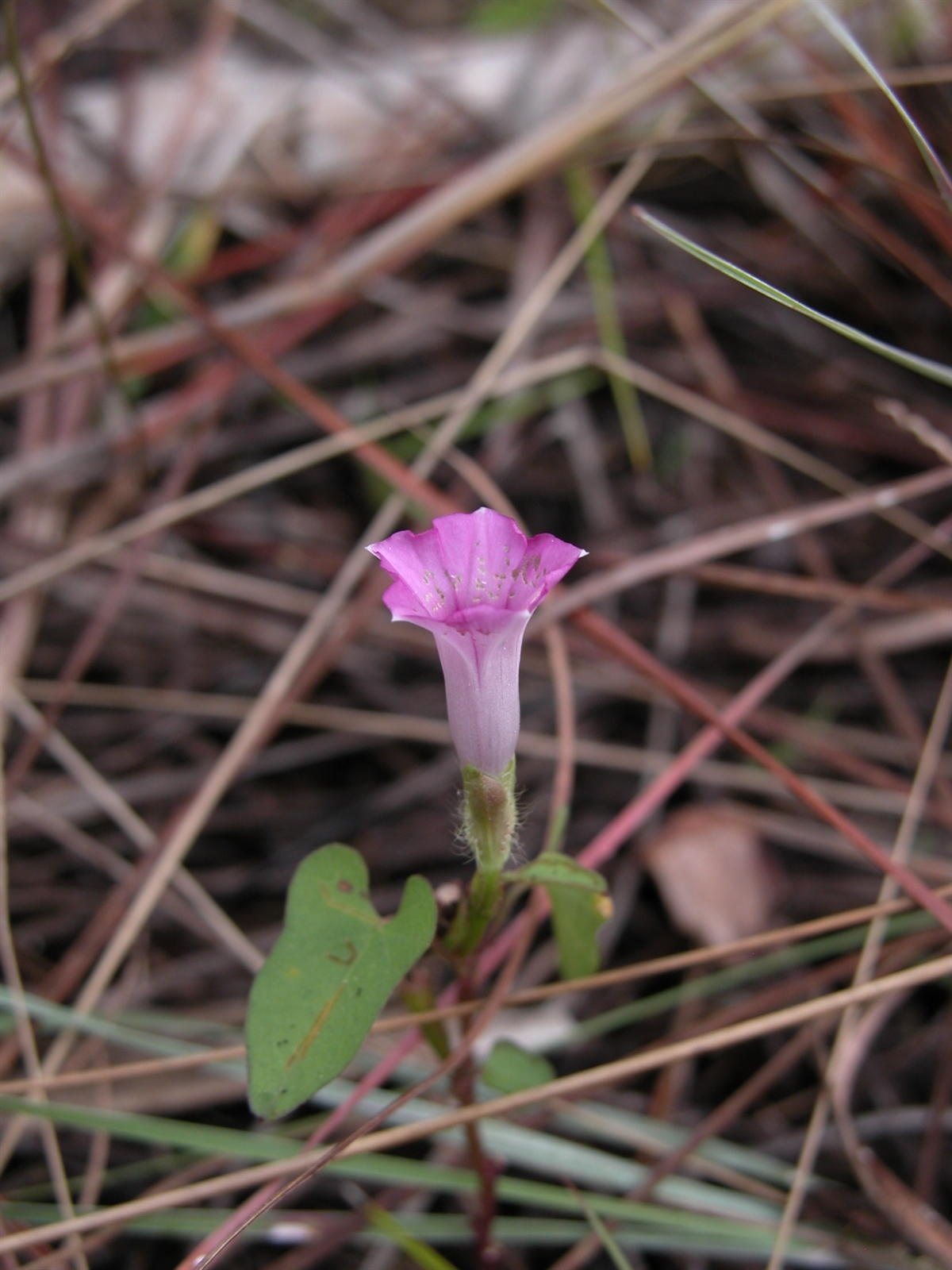Habit: Ipomoea triloba grows as a glabrous (occasionally slightly pubescent), climbing, perennial vine to 8 meters in length, with individuals vines often twining together, arising from a tuber. Leaves variable in shape from ovate/oval to 3 or 5 lobed. Leaves arranged alternately to 8 centimeters long and to 7 centimeters wide with an entire or dentate margin, glabrous or pubescent, with an acute to obtuse leaf apex and a cordate leaf base.
The complete, perfect, actinomorphic flowers are arranged in umbel like cymes. The calyx has 5 unfused, green pubescent sepals. The funnelform corolla has 5 fused, pink petals that are slightly enlarged at the base. There are 5 functional stamens fused to the base of the corolla. The superior ovary with 3 locules and numerous ovules. The round fruit is a 4 seeded, pubescent capsule with glabrous or pubescent seeds.
Habitat: Ipomoea triloba grows in Pine Woodlands, Dry Broadleaf Evergreen Formations – Forest/Shrubland and in Human Altered environments (abandoned fields, road sides).
Distribution: Ipomoea triloba occurs throughout the Lucayan Archipelago, the Caribbean, and Central and northern South America. It has spread around the globe to Africa, Asia, and Australia.
Medicinal/Cultural/Economic Usage: Ipomoea triloba is not known to be used medicinally in the Lucayan Archipelago.



